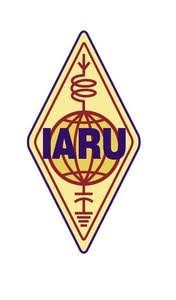Op de website van de VERON wordt gebruik gemaakt van cookies. Wij gebruiken functionele cookies voor het goed functioneren van de website, zoals het onthouden van instellingen en het bijhouden van de inhoud van een winkelwagentje. Analytische cookies gebruiken wij ter verbetering van onze website door het bijhouden van bezoekersstatistieken. Voor deze cookies is geen toestemming van de gebruiker nodig.
SluitenWe kunnen vragen om cookies op uw apparaat te plaatsen. We gebruiken cookies om ons te laten weten wanneer u onze websites bezoekt, hoe u met ons omgaat, om uw gebruikerservaring te verrijken en om uw relatie met onze website aan te passen.
Klik op de verschillende rubrieken voor meer informatie. U kunt ook enkele van uw voorkeuren wijzigen. Houd er rekening mee dat het blokkeren van sommige soorten cookies van invloed kan zijn op uw ervaring op onze websites en de services die we kunnen bieden.
Deze cookies zijn strikt noodzakelijk om u diensten aan te bieden die beschikbaar zijn via onze website en om sommige functies ervan te gebruiken.
Omdat deze cookies strikt noodzakelijk zijn om de website te leveren, heeft het weigeren ervan invloed op het functioneren van onze site. U kunt cookies altijd blokkeren of verwijderen door uw browserinstellingen te wijzigen en alle cookies op deze website geforceerd te blokkeren. Maar dit zal u altijd vragen om cookies te accepteren/weigeren wanneer u onze site opnieuw bezoekt.
We respecteren volledig als u cookies wilt weigeren, maar om te voorkomen dat we u telkens opnieuw vragen vriendelijk toe te staan om een cookie daarvoor op te slaan. U bent altijd vrij om u af te melden of voor andere cookies om een betere ervaring te krijgen. Als u cookies weigert, zullen we alle ingestelde cookies in ons domein verwijderen.
We bieden u een lijst met opgeslagen cookies op uw computer in ons domein, zodat u kunt controleren wat we hebben opgeslagen. Om veiligheidsredenen kunnen we geen cookies van andere domeinen tonen of wijzigen. U kunt deze controleren in de beveiligingsinstellingen van uw browser.
Deze cookies verzamelen informatie die in geaggregeerde vorm wordt gebruikt om ons te helpen begrijpen hoe onze website wordt gebruikt of hoe effectief onze marketingcampagnes zijn, of om ons te helpen onze website en applicatie voor u aan te passen om uw ervaring te verbeteren.
Als u niet wilt dat wij uw bezoek aan onze site volgen, kunt u dit in uw browser hier uitschakelen:
We gebruiken ook verschillende externe services zoals Google Webfonts, Google Maps en externe videoproviders. Aangezien deze providers persoonlijke gegevens zoals uw IP-adres kunnen verzamelen, kunt u ze hier blokkeren. Houd er rekening mee dat dit de functionaliteit en het uiterlijk van onze site aanzienlijk kan verminderen. Wijzigingen zijn pas effectief zodra u de pagina herlaadt
Google Webfont Instellingen:
Google Maps Instellingen:
Google reCaptcha instellingen:
Vimeo en Youtube video's insluiten:
De volgende cookies zijn ook nodig - U kunt kiezen of u ze wilt toestaan:

IARU coördinatie van satelliet frequenties
/in Satelliet nieuws/door Chris van den BergIARU committed to only coordinate satellite frequencies within the internationally aligned IARU band plans.
The two metre amateur band is one of the most popular and populated bands in all the spectrum allocated to the amateur and amateur satellite services. This recently led to a request by satellite builders for coordination outside the spectrum reserved for satellites in the IARU band plans (145,800 – 146,000 MHz) as not enough channels are available to satisfy their requirements.
The IARU Satellite Adviser, Hans van de Groenendaal, ZS6AKV and his advisory panel are mandated to coordinate frequencies within the IARU band plans for amateur satellites. Coordinated frequencies must comply with band plans that are common to all three IARU Regions Satellites coordinated outside these plans could cause interference to terrestrial amateur operations in other regions. In theory satellites could be programmed so that they only operate over their country of origin. Because satellite orbits make it difficult to pinpoint operations, spill over to other Regions may occur during parts of the orbit. Accordingly, IARU will not coordinate frequencies for satellites which are planned to operate outside the internationally aligned IARU band plans for amateur satellites.
The IARU offers frequency coordination in an effort to maximise spectrum utilisation and avoid possible interference to other satellites and ground stations.
The IARU requests that satellite groups work on a sharing plan or use other parts of the amateur service spectrum designated for satellite operation. When a large group of satellite sharing the same band are launched, they will soon drift apart which enhances the opportunity to share the same frequencies. For example, during the initial phase, just after launch, a time sharing system could be used to monitor the payloads before initialising transponders and other systems.
For instance, the 10 metre band, once popular with satellite builders, is today not significantly used. The band segment 29,300-29,510 MHz has been used for amateur-satellite downlinks for more than 40 years, beginning with Australis-OSCAR 5 in 1970 and AMSAT-OSCAR 6, AMSAT’s first communications satellite, in 1972. The band segment was very popular for downlinks in the 1970s and 1980s. Today, only one amateur satellite actively uses a 29 MHz downlink: AMSAT-OSCAR 7, launched in 1974. While a 29 MHz downlink would not be practical for today’s very small satellites, owing to the size of the antenna required, the band could be used very practically for uplinks even with small receiving antennas, because transmitting power at the earth station is easy to obtain. The IARU Satellite Adviser and his panel believe that the 10 metre band offers a good alternative to2metre uplinks
Currently the IARU team also coordinates frequencies for satellites built by universities and educational groups in an effort to maximise spectrum utilisation and mitigate any possible interference to Amateur Radio operations. The IARU is committed to work with these groups and with the ITU to find other spectrum for these satellites.
________________________________
Rod Stafford W6ROD
Secretary
International Amateur Radio Union (IARU)
ARRL letter van 13 augustus met bericht over de frequentie coordinatie
/in Satelliet nieuws/door Chris van den BergAMSAT Echoes IARU Satellite Coordination Concerns
AMSAT-NA has joined the International Amateur Radio Union (IARU) in expressing concern that some soon-to-be-launched satellites operating in Amateur Radio bands could cause conflicts in some ITU regions. In an August 7 statement on behalf of the IARU, Secretary Rod Stafford, W6ROD, said the IARU had become aware of plans to launch a series of satellites, “where the frequencies proposed appear to conflict with existing IARU band plans” in parts of the world.
“IARU is investigating how this has arisen, and is discussing the issues with the parties involved,” Stafford said. AMSAT-UK has reported that the IARU Satellite Coordinator was asked to look into the matter.
While Stafford did not name any specific satellites that may be of concern, AMSAT-UK has said that some frequencies proposed for the Chinese Amateur Radio Group (CAMSAT) XW-2/CAS-3 mission do not respect the internationally agreed-upon 2 meter band plan for IARU Region 1.
AMSAT-NA President Barry Baines, WD4ASW, told the ARRL that AMSAT’s initial excitement regarding the pending CAMSAT launch of nine Amateur Radio satellites has been tempered by concerns that some of the proposed amateur frequencies may not have been properly coordinated.
“While these frequencies are within the spectrum allocated for the Amateur Satellite Service, several will conflict with existing terrestrial allocations, as well as with the normal voice and SSTV downlink from the ISS,” Baines told ARRL. “We support the IARU’s effort to determine how the lack of coordination occurred, to mitigate the interference issues to the maximum amount possible, and to ensure that future amateur satellites will be coordinated in accord with established norms for the benefit of all.”
With the support of the International Telecommunication Union (ITU), IARU volunteer satellite coordinators assign appropriate frequencies for satellites designed to operate on Amateur Radio frequencies. Stafford said these efforts have generally been successful, “allowing satellites to operate without undue interference to each other and to other services using the bands in question.” — Thanks to IARU, AMSAT, and AMSAT News Service
Satelliet frequentie coordinatie
/in Satelliet nieuws/door Chris van den BergFor some years, IARU has sought, through its group of volunteer satellite coordinators, to assign appropriate frequencies to be used by space satellites operating in the amateur bands. These efforts have generally been successful, allowing satellites to operate without undue interference to each other and to other services using the bands in question. The IARU role in coordination of frequencies is supported by ITU.
IARU is aware of a few satellites already operating in amateur bands which are causing difficulties in parts of the world as the frequencies they use do not appear to accord to existing band plans. IARU has now become aware of plans to launch a series of satellites where the frequencies proposed appear to conflict with existing IARU band plans in some parts of the world. IARU is investigating how this has arisen, and is discussing the issues with the parties involved.
We will make a further statement as soon as possible.
Rod W6ROD